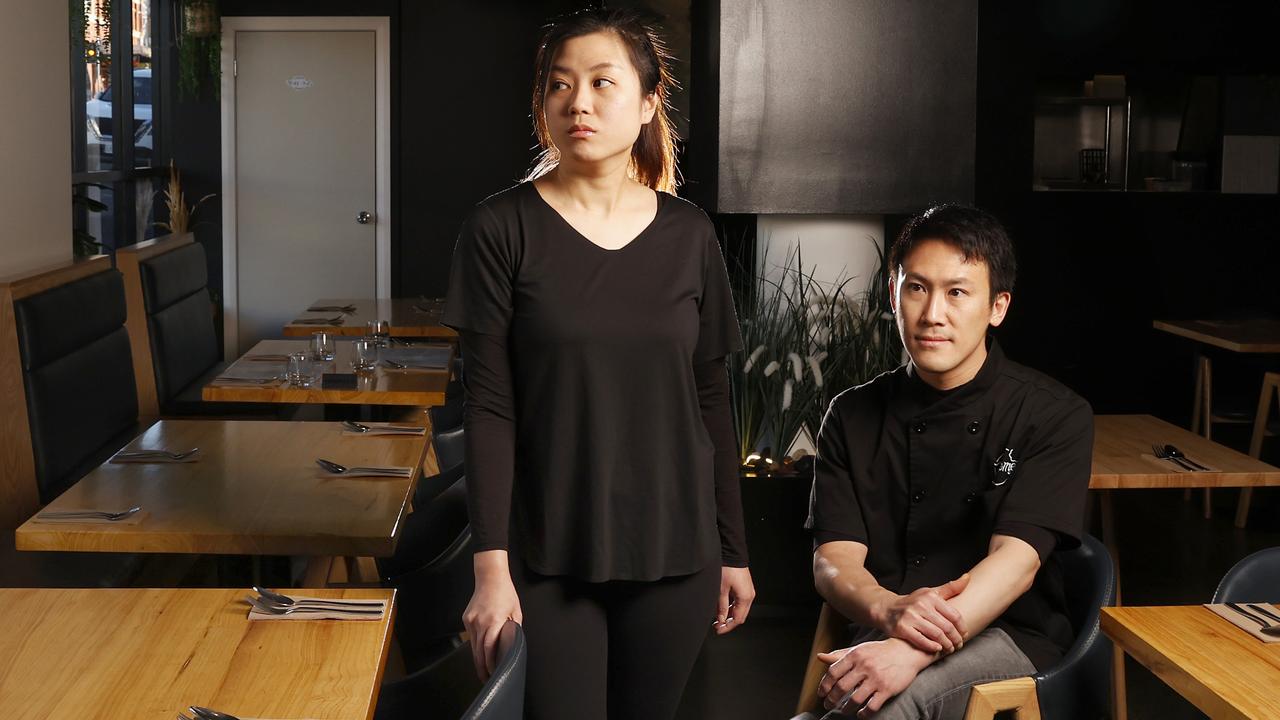Property Council says Hobart needs higher setbacks
As the Hobart City Council looks at building higher to pave the way for more housing, the Property Council says there’s another limitation which needs to be addressed. LATEST >>

Tasmania
Don't miss out on the headlines from Tasmania. Followed categories will be added to My News.
The Property Council of Australia says discussions around building heights in Hobart can only begin when another planning scheme limitation is addressed.
On Monday, the City of Hobart released a draft of its Central Hobart Plan, which maps out planning strategies across 64 blocks in the CBD.
The draft plan, which is currently open for consultation, also includes possible guidelines for maximum building heights.
It’s suggested the highest buildings be a maximum of 60 metres, or 15 to 18 storeys.
Buildings in nine blocks in the CBD would be allowed to extend to the maximum height.
As buildings move away from the central precinct, the maximum heights would reduce.

Property Council of Australia’s Tas executive director Rebecca Ellston said there needed to be a discussion about building setbacks.
“It’s an absolute furphy to talk about height limits when there is a defacto limitation on the height of development by virtue of the setback requirements in the planning scheme,” Ms Ellston said.
“We endorse the flexibility to go to additional heights to facilitate residential development in the city but there would need to be a relaxation of setback requirements specifically for residential, to enable that possibility to be explored by the development community.

“Increases in density are incremental overtime in every single city in the world and our focus should not just be on increasing height limits and relaxing setbacks it should also be on encouraging infill developments by incentivisation through rate relief and planning scheme.”
New setbacks are also proposed under the plan, the highest of which are 20 metres.
Most of the 20 metre streetwalls would be north facing and in the central precinct.
The draft plan comes with the projection the Greater Hobart population will increase by 47,000 over the next decade, 7000of which are expected to live in the CBD.
It’s hoped the building heights would facilitate the growth in the area.
The plan aimed to strike a balance between maintaining the heritage properties of Hobart and the growth of the region.
Meanwhile, Ms Ellston said the council needed to focus on other measures to assist with housing.
“Where is the focus on activating and densifying the [transit] corridor for much needed housing? They should be focusing on the real issue which is providing mechanisms to allow developers and industry to build much needed affordable housing,”
“Instead they are trying to stifle development with limitations and additional developer contributions and levies, ignoring the additional rates revenue development will bring.”
Raising the roof to add more houses in inner-city Hobart
Building heights in certain areas of Hobart’s CBD could be higher under a draft plan for the city created to guide and shape future development.
The City of Hobart is now seeking feedback on the Central Hobart Plan, which stretches across 64 blocks.
The areas included in the plan would be divided into five precincts: the Central Precinct, the Civic and Cultural Precinct, the Innovation Precinct, the Trinity Hill Precinct and the Rivulet Precinct.
“I think as people look over the draft they’ll see a strong effort to maintain the character we know and love about Hobart but also manage the future growth to chart a course for,” Hobart urban design advisory panel chair Scott Balmforth said.

The draft plan, which is now out for community consultation, includes creating more public community spaces and laneways in Hobart, as well as greater transport solutions.
Hobart Lord Mayor Anna Reynolds said the plan attempted to find a balance between growth and maintain the character and charm of Hobart.
“Cities can either have development happen to them in a way that’s ad hoc and inappropriate, or cities can get on the front foot with a plan of a vision of what sort of city we want,” Ms Reynolds said. “We don’t just want any old development happen to this city.”
The plan comes as the Greater Hobart population is expected to increase by 47,000 over the next decade.
Of that, 7000 are expected to live in Central Hobart, which is why the need for different housing was identified.

“[The plan] focuses on trying to get more medium density housing, to provide more choice,” Ms Reynolds said.
“So often the only options are three bedroom houses on the edge of our city, some people would prefer an apartment in our inner city so this plan will hopefully facilitate more options for people to live in our centre.
Ms Reynolds said the plan would set clearer guidelines about preferred building heights.
It’s suggested the highest buildings be allowed in the central precinct, which would allow for a maximum of 60 metres.
As buildings moved away from the central precinct, the building heights would reduce, with most of the Trinity Hill and Rivulet Precincts restricted to heights of 18, 15 and 9.5 metre heights.
Parts of the innovation and the civic and cultural precincts would allow for 21 and 45 metre heights.
“We do want Hobart to retain something a little bit special and different so we can continue to see our beautiful mountain, so we’ve got streets that aren’t full of shade and wind and we don’t overwhelm our heritage character as well,” Ms Reynolds said.
“It certainly allows for buildings in the centre to be higher than the current limits, it’s not overwhelming.”
Mr Balmforth said buildings could be higher in the central precinct.
“You’ve got the central area which has the capacity for some increased height in buildings,” he said.
“As you get out, we’ve got new areas that will come under different types of development as you go up to Campbell and Argyle streets.”
The draft plan can be found on the City of Hobart website, and will be open for comment until April 30.

UNIVERSITY MOVE
The City of Hobart will need to work with the University of Tasmania to brings its Central Hobart Plan to life.
The plan identifies both state government and university land holdings as development sites which should be investigated.
The report says it is the intent of the council to seek discussions with UTAS about the future of its sites.
“These sites may be under-utilised or vacant; they may be particularly visible and prominent; or they may already be owned by a public authority,” the plan says.
“For example, UTAS land holdings are of strategic importance to the city, and the way they are developed will have an impact on the public realm, local businesses, the surrounding streets, and the way the city is used.
“Key development sites may also be suitable for the inclusion of affordable housing or public open space.”
Other opportunities involving the university were also identified
“The expansion of the Royal Hobart Hospital and the move of some the University of Tasmania’s functions into Central Hobart provides an environment for innovation, as well as opportunities for co-located research and development facilities,” the plan said.





